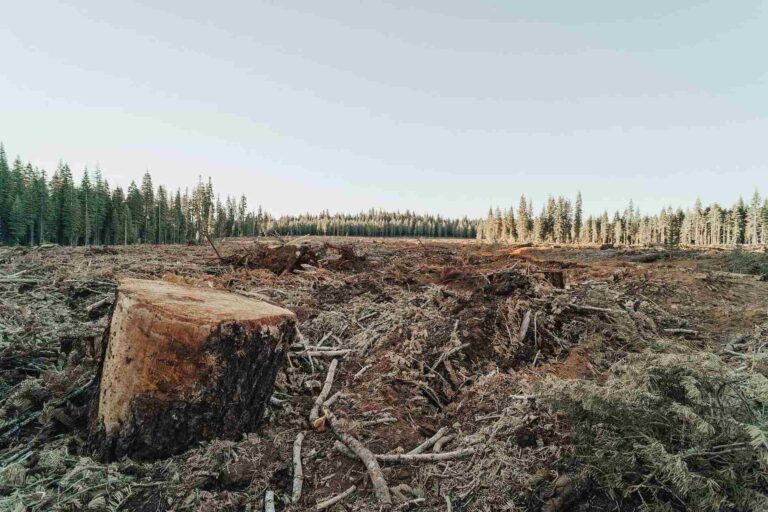The uncertainty that strikes wildlife and aquatic species daily is quite alarming as they experience habitat loss and disruption in their lives.
In an attempt for humans to sort for or exhaust natural resources, the homes of many animals are lost in the process, causing a natural habitat to become incapable of supporting its native species.
In this article, I’ll be enlightening you on habitat loss and what it entails.
Table of Contents
What is habitat loss
Habitat loss, often known as habitat destruction, occurs when humans remove the natural homes that species rely on.
Habitat loss also refers to eradicating or modifying the circumstances required for plants and animals to survive in a specific location. The occurrence of habitat loss has a significant impact on the entire ecosystem in addition to particular species. The size of the world’s woods, lakes, wetlands, plains, and other habitat types decreases or disappears entirely in the worst-case scenario.
The primary human cause of habitat loss is pressure from agriculture. Other practices such as resource extraction, manufacturing, urbanization, Urban sprawl, mining, logging, and trawling are good ways humans contribute to habitat deterioration.
Significant kinds of habitat loss
An ecosystem may no longer be able to offer the food, water, cover, and places to raise young that species need to survive when it has been significantly altered by human activity, such as agriculture, oil and gas exploration, commercial development, or water diversion causing the number of habitats available to wildlife to decrease daily.
1. Fragmentation
As wild areas are divided up and fragmented by human activity, this results in a vast habitat loss. The spatial separation of ecosystems from a former condition of more excellent continuity is known as habitat fragmentation.
The ‘breaking up’ of ecosystems into fragments is mainly brought on by converting agricultural land for urban development, dams, water diversions, pollution, invasive species, and deforestation. Still, it can also be brought on by geological processes that gradually change the physical environment topography.
Animals in these areas are more at risk of going extinct due to fragmentation, which narrows their ranges and limits their ability to move. Separating animal populations due to habitat destruction can also lower genetic diversity.
Read also: 5 animals recently extinct in the 2020s: the role that humans and climate change played in it
2. Degradations
The degradation of habitat is another effect of human progress. Environmental factors like pollution, climate change, and the introduction of invasive species, humans indirectly contribute to habitat degradation by lowering environmental quality and limiting the ability of native plants and animals to flourish.
The rapidly expanding human population is the primary cause of habitat degradation. Humans use more land for agriculture and the growth of cities and towns, dispersed over ever-larger areas as the population grows.
3. Destruction
Damaging or destroying a natural habitat to the point where it can no longer support the species and biological communities that naturally exist is known as habitat destruction. It frequently leads to the extinction of species, which reduces biodiversity.
Many human activities, which entail clearing land for uses, including agriculture, mining, logging, hydroelectric dams, and urbanization, can directly harm habitat.
Even while human activity is essentially to blame for habitat degradation, this problem is not entirely caused by humans. Natural disasters, including floods, earthquakes, volcanic eruptions, and changes in the climate, can also cause habitat loss.
Effects of habitat loss
The following are the effects of habitat loss plays on the environment:
- Reduced biodiversity
One ecosystem may have hundreds or thousands of different plant and animal species. This number will drop precipitously if habitat destruction occurs there.
The populations of animal species will decrease and may even become extinct if their environment is lost, restricting their access to food, water, and shelter. One of the critical reasons that between 14,000 and 35,000 species are in danger of going extinct is habitat loss.
Read also: Biodiversity loss: why it is a major problem, causes and solutions
- Less pollination and seed dispersal
Many plants, both domestic and wild, rely on pollination for reproduction. For instance, bees and other insects must transport pollen from one bloom to another for fruits and vegetables.
As you may already be aware, habitat loss is the main reason for the fall in bee populations. Bees have lost some food sources due to increased intense farming and urban development. There will be fewer flowers and plants that can effectively reproduce if there are fewer bees to pollinate them.
- More plant pest
Because of the loss of habitat, there are fewer plant species, which makes it much simpler for pests to spread. The elimination of an entire plant species could result from this. When plant diversity is higher, more insects and animals that prey on pests are present. Plant species are put in danger by habitat loss.
- More carbon dioxide
Reduced in size, forests, woodlands, and other regions with dense vegetation are less able to absorb carbon dioxide than they formerly could. As a result, more greenhouse gases will be released into the atmosphere, worsening climate change’s consequences.
Ways to stop habitat loss
Large-scale farming operations frequently result in habitat loss and damage. However, you can still make some changes to your daily routine to make it more environmentally conscious and sustainable.
- reduce water usage;
- plant a garden;
- avoid the use of fertilizers;
- reduce, reuse, recycle.
Habitat loss result in species extinction
Habitat loss typically results in species extinctions. However, it can also create new habitats that offer a setting for the emergence of new species, illustrating the adaptability of life on Earth.
Unfortunately, human activity degrades natural ecosystems faster and on larger sizes than most species and populations can tolerate.
Read also: What the concept “nature positive” means and how biodiversity can be increased












